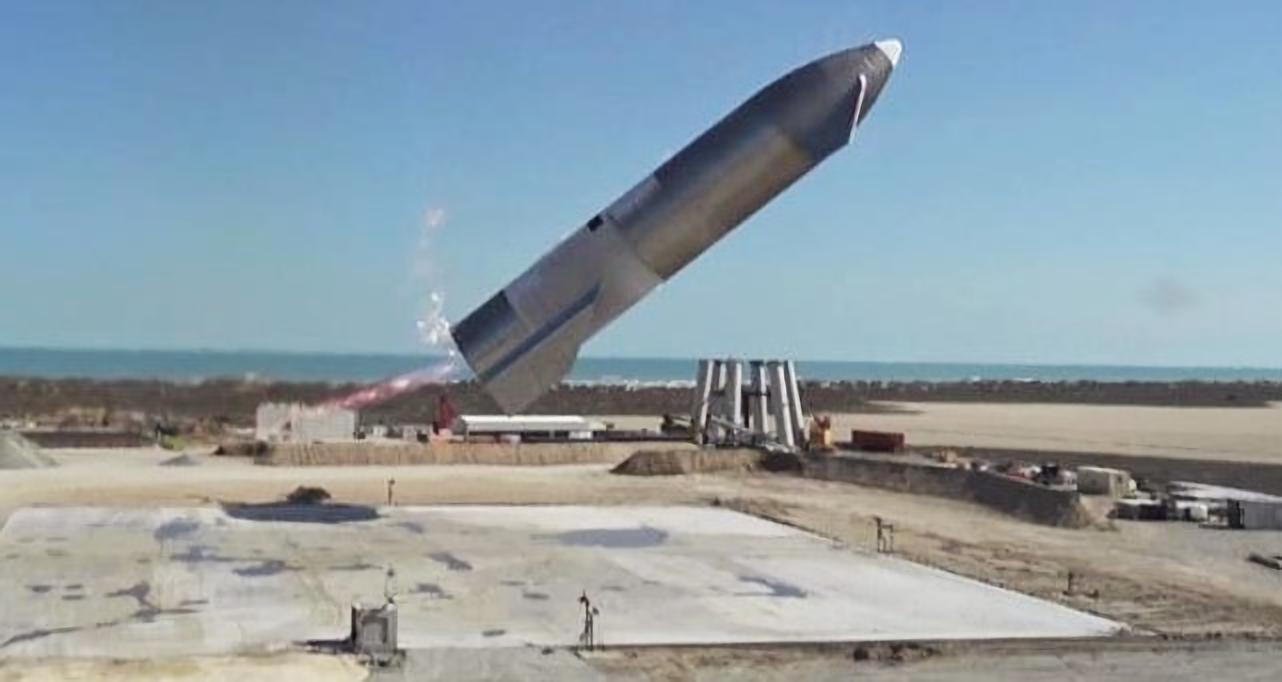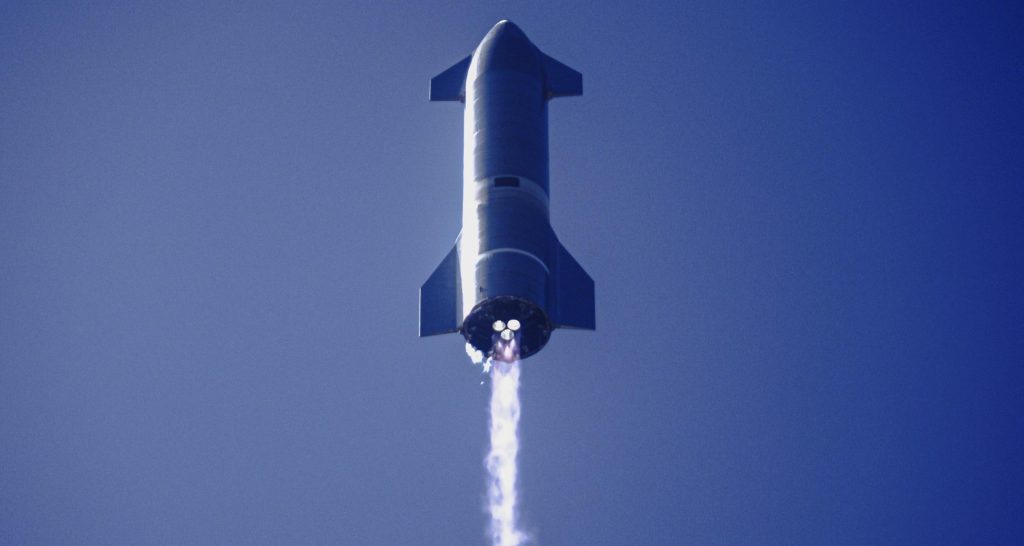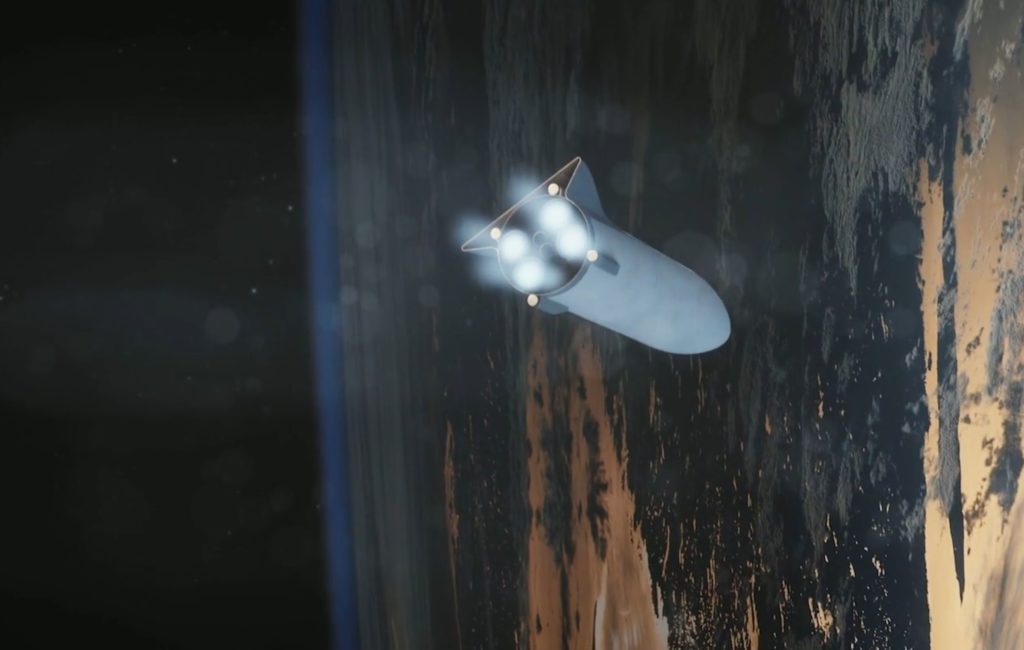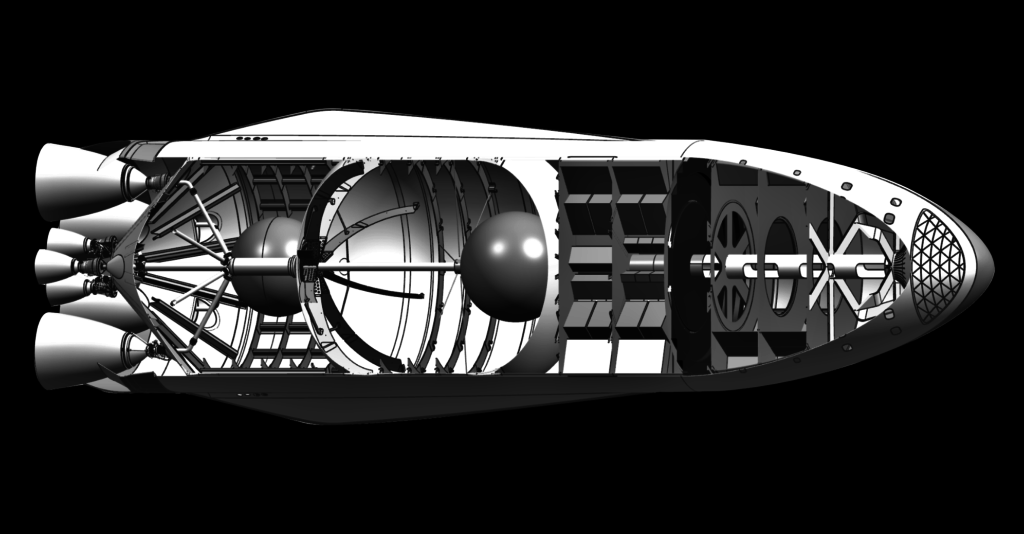

News
SpaceX CEO Elon Musk talks Starship explosion: “We were too dumb”
Two days after a last-second failure caused Starship SN9 to smash into the ground and explode, SpaceX CEO Elon Musk has returned to Twitter with some harsh preliminary reactions.
Right off the bat, in response to a question about why Starships SN8 and SN9 both attempted their unsuccessful landings with only two of three available Raptor engines, Musk frankly stated that “we were too dumb.” At face value, it’s a decent question, given that there are no obvious showstoppers to explain why Starships couldn’t make the most of the redundancy their three Raptor engines can offer.
After completing an otherwise flawless 6.5 minutes launch, ascent, and belly-flop descent, Starship SN9 began a critical ~120-degree flip maneuver, sequentially igniting two Raptor engines and using that thrust to flip from a belly-down attitude to a tail-first landing configuration. Unfortunately, though the first Raptor did fire up and put in a good effort, the second engine failed to ignite, leaving the building-sized rocket to impact the ground traveling far too quickly.
Ironically, more than three years ago, Musk himself revealed in a Reddit Ask Me Anything thread that he and his engineers had decided to modify Starship’s (then known as BFS) design by adding a third Raptor to its central cluster of two engines.
“Btw, we modified the [Starship] design since IAC [2017] to add a third medium-area-ratio Raptor engine partly for that reason (lose only 1/3 thrust in engine out) and allow landings with higher payload mass for the Earth to Earth transport function.”
Elon Musk – Reddit AMA – October 2017
Primarily meant to enable more efficient landings in Earth’s atmosphere, adding a third engine to that cluster would logically increase the chances of a successful (or at least survivable) landing in the event that one engine fails. Greater thrust and an improved thrust-to-weight ratio both during launch and landing would fundamentally improve the efficiency of Starship, likely making up for most or all of the added weight.



In retrospect, it’s not entirely surprising to learn that a three-engine landing burn is probably the most logical option if three landing-class engines have been included in the design. In SpaceX and Musk’s defense, however, there are also several good reasons to use as few Raptor engines as possible.
It was foolish of us not to start 3 engines & immediately shut down 1, as 2 are needed to land— Elon Musk (@elonmusk) February 4, 2021
Throttling high-performance rocket engines is exceptionally difficult and Raptor is not yet a fully mature engine, meaning that it’s throttle capabilities are likely less than optimal. That’s relevant because the higher a rocket’s thrust-to-weight ratio during landing, the more aggressive its landings have to be. SpaceX is apparently extremely conservative with Starship in this regard, prioritizing slow, gentle landings by only using two of three available engines.
Ironically, it’s possible that that attempt at risk reduction resulted in harder landings for both Starship SN8 and SN9, as three-engine landing burns could have potentially slowed them down significantly more before impact.
At the same time, though it may have mitigated the severity of both landing failures, three-engine landing burns would not have resolved the fundamental issues that caused them. In SN8’s case, low fuel header tank pressure doomed the Starship, while SN9 is more ambiguous. Aside from the clear Raptor ignition failure, which a three-engine burn could have resolved by downselecting to two healthier engines, the one Raptor that did ignite appeared to suffer some kind of uncontained failure seconds before landing.
Impressively, despite that apparent combustion chamber or preburner failure, the engine’s landing burn seemed to continued uninterrupted until the moment of impact. As such, it’s hard to say if that lone Raptor was still producing substantial thrust or if it was in the throes of a catastrophic failure. If it could have held on for another 5-10 seconds and the third Raptor (the engine that didn’t reignite) was able to restart and perform without issue, a three-engine landing burn could have easily made SN9’s demise less violent or even have enabled a soft landing.
While a three-engine burn all the way to touchdown appears to be extremely risky or impossible for present-day Starships, Musk implied that there was nothing preventing SpaceX from reigniting all three engines during the initial flip and landing burn and using that time to determine the health of all three engines. If all three were healthy, Starship would shut down one for a soft landing. If one engine failed to restart or lost thrust shortly after ignition, the other two would already be active and able to take over.
Musk says that Starship SN10, already at the launch pad and likely days away from its first tests, will attempt to adopt that approach on an upcoming test flight expected as few as 2-3 weeks from now.
News
These Tesla, X, and xAI engineers were just poached by OpenAI
The news is the latest in an ongoing feud between Elon Musk and the Sam Altman-run firm OpenAI.

OpenAI, the xAI competitor for which Elon Musk previously served as a boardmember and helped to co-found, has reportedly poached high-level engineers from Tesla, along with others from xAI, X, and still others.
On Tuesday, Wired reported that OpenAI hired four high-level engineers from Tesla, xAI, and X, as seen in an internal Slack message sent by co-founder Greg Brockman. The engineers include Tesla Vice President of Software Engineering David Lau, X and xAI’s head of infrastructure engineering Uday Ruddarraju, and fellow xAI infrastructure engineer Mike Dalton. The hiring spree also included Angela Fan, an AI researcher from Meta.
“We’re excited to welcome these new members to our scaling team,” said Hannah Wong, an OpenAI spokesperson. “Our approach is to continue building and bringing together world-class infrastructure, research, and product teams to accelerate our mission and deliver the benefits of AI to hundreds of millions of people.”
Lau has been in his position as Tesla’s VP of Software Engineering since 2017, after previously working for the company’s firmware, platforms, and system integration divisions.
“It has become incredibly clear to me that accelerating progress towards safe, well-aligned artificial general intelligence is the most rewarding mission I could imagine for the next chapter of my career,” Lau said in a statement to Wired.
🚨Optimistic projections point to xAI possibly attaining profitability by 2027, according to Bloomberg's sources.
If accurate, this would be quite a feat for xAI. OpenAI, its biggest rival, is still looking at 2029 as the year it could become cash flow positive.💰 https://t.co/pE5Z9daez8
— TESLARATI (@Teslarati) June 18, 2025
READ MORE ON OPENAI: Elon Musk’s OpenAI lawsuit clears hurdle as trial looms
At xAI, Ruddarraju and Dalton both played a large role in developing the Colossus supercomputer, which is comprised of over 200,000 GPUs. One of the major ongoing projects at OpenAI is the company’s Stargate program,
“Infrastructure is where research meets reality, and OpenAI has already demonstrated this successfully,” Ruddarraju told Wired in another statement. “Stargate, in particular, is an infrastructure moonshot that perfectly matches the ambitious, systems-level challenges I love taking on.”
Elon Musk is currently in the process of suing OpenAI for shifting toward a for-profit model, as well as for accepting an investment of billions of dollars from Microsoft. OpenAI retaliated with a counterlawsuit, in which it alleges that Musk is interfering with the company’s business and engaging in unfair competition practices.
Elon Musk confirms Grok 4 launch on July 9 with livestream event
News
SpaceX share sale expected to back $400 billion valuation
The new SpaceX valuation would represent yet another record-high as far as privately-held companies in the U.S. go.

A new report this week suggests that Elon Musk-led rocket company SpaceX is considering an insider share sale that would value the company at $400 billion.
SpaceX is set to launch a primary fundraising round and sell a small number of new shares to investors, according to the report from Bloomberg, which cited people familiar with the matter who asked to remain anonymous due to the information not yet being public. Additionally, the company would sell shares from employees and early investors in a follow-up round, while the primary round would determine the price for the secondary round.
The valuation would represent the largest in history from a privately-owned company in the U.S., surpassing SpaceX’s previous record of $350 billion after a share buyback in December. Rivaling company valuations include ByteDance, the parent company of TikTok, as well as OpenAI.
Bloomberg went on to say that a SpaceX representative didn’t respond to a request for comment at the time of publishing. The publication also notes that the details of such a deal could still change, especially depending on interest from the insider sellers and share buyers.
Axiom’s Ax-4 astronauts arriving to the ISS! https://t.co/WQtTODaYfj
— TESLARATI (@Teslarati) June 26, 2025
READ MORE ON SPACEX: SpaceX to decommission Dragon spacecraft in response to Pres. Trump war of words with Elon Musk
SpaceX’s valuation comes from a few different key factors, especially including the continued expansion of the company’s Starlink satellite internet company. According to the report, Starlink accounts for over half of the company’s yearly revenue. Meanwhile, the company produced its 10 millionth Starlink kit last month.
The company also continues to develop its Starship reusable rocket program, despite the company experiencing an explosion of the rocket on the test stand in Texas last month.
The company has also launched payloads for a number of companies and government contracts. In recent weeks, SpaceX launched Axiom’s Ax-4 mission, sending four astronauts to the International Space Station (ISS) for a 14-day stay to work on around 60 scientific experiments. The mission was launched using the SpaceX Falcon 9 rocket and a new Crew Dragon capsule, while the research is expected to span a range of fields including biology, material and physical sciences, and demonstrations of specialized technology.
News
Tesla Giga Texas continues to pile up with Cybercab castings
Tesla sure is gathering a lot of Cybercab components around the Giga Texas complex.

Tesla may be extremely tight-lipped about the new affordable models that it was expected to start producing in the first half of the year, but the company sure is gathering a lot of Cybercab castings around the Giga Texas complex. This is, at least, as per recent images taken of the facility.
Cybercab castings galore
As per longtime drone operator Joe Tegtmeyer, who has been chronicling the developments around the Giga Texas complex for several years now, the electric vehicle maker seems to be gathering hundreds of Cybercab castings around the factory.
Based on observations from industry watchers, the drone operator appears to have captured images of about 180 front and 180 rear Cybercab castings in his recent photos.
Considering the number of castings that were spotted around Giga Texas, it would appear that Tesla may indeed be preparing for the vehicle’s start of trial production sometime later this year. Interestingly enough, large numbers of Cybercab castings have been spotted around the Giga Texas complex in the past few months.
Cybercab production
The Cybercab is expected to be Tesla’s first vehicle that will adopt the company’s “unboxed” process. As per Tesla’s previous update letters, volume production of the Cybercab should start in 2026. So far, prototypes of the Cybercab have been spotted testing around Giga Texas, and expectations are high that the vehicle’s initial trial production should start this year.
With the start of Tesla’s dedicated Robotaxi service around Austin, it might only be a matter of time before the Cybercab starts being tested on public roads as well. When this happens, it would be very difficult to deny the fact that Tesla really does have a safe, working autonomous driving system, and it has the perfect vehicle for it, too.
-

 Elon Musk1 week ago
Elon Musk1 week agoTesla investors will be shocked by Jim Cramer’s latest assessment
-

 News2 weeks ago
News2 weeks agoTesla Robotaxi’s biggest challenge seems to be this one thing
-

 Elon Musk1 day ago
Elon Musk1 day agoElon Musk confirms Grok 4 launch on July 9 with livestream event
-

 News2 weeks ago
News2 weeks agoWatch the first true Tesla Robotaxi intervention by safety monitor
-

 News5 days ago
News5 days agoTesla Model 3 ranks as the safest new car in Europe for 2025, per Euro NCAP tests
-

 Elon Musk2 weeks ago
Elon Musk2 weeks agoA Tesla just delivered itself to a customer autonomously, Elon Musk confirms
-

 Elon Musk2 weeks ago
Elon Musk2 weeks agoxAI welcomes Memphis pollution results, environmental groups push back
-

 Elon Musk2 weeks ago
Elon Musk2 weeks agoElon Musk confirms Tesla Optimus V3 already uses Grok voice AI















